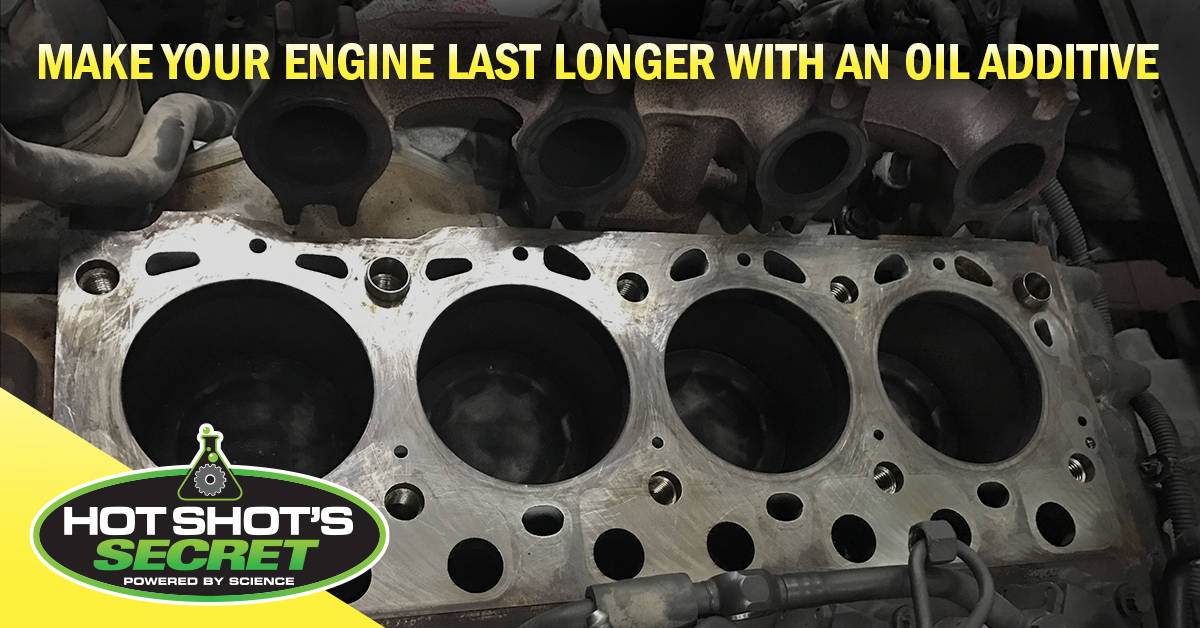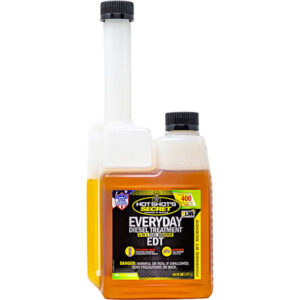
Carbon deposits and buildup are byproducts of incomplete combustion and the breakdown of oil in an engine. They are similar to the black soot that collects in a chimney and can harden on internal engine components such as cylinder walls, injection nozzles and intake valves.
High carbon deposits can lead to engine performance inefficiencies, which can damage the engine and cause critical component failure. As more buildup occurs, corrosion and wear severity within the engine increase. Carbon deposits can disrupt air flow and cause the engine to operate outside OEM specs, resulting in an inconsistent air-fuel ratio. This imprecision causes the engine to operate on rich and lean mixtures, which causes hot spots within the combustion chamber.
What Is Carbon Buildup in an Engine?
Carbon buildup is the accumulation of hard, black deposits within the engine composed of unburnt or partially burnt fuel and oil residues. Excessive carbon buildup occurs when the accumulation of combustion residue exceeds the engine’s capacity to handle it, leading to a noticeable decline in performance and efficiency. Carbon buildup forms in the combustion chamber, pistons, intake valves and injectors.
What Causes Carbon Buildup in Engines?
Carbon buildup happens for many reasons:
- Incomplete fuel combustion: When fuel doesn’t burn completely, it leaves behind carbon deposits.
- Oil breakdown: In an engine, oil breaks down from heat, pressure, and combustion byproducts, causing its molecules to oxidize and lose stability. As the degraded oil burns or reacts with fuel residues, it forms carbon deposits and varnish that stick to engine parts.
- Short trips: Frequent short car journeys cause the engine to work more than it needs to, which can lead to more buildup.
- Stop-and-go traffic: Heavy traffic can contribute to a lot of stop/start traveling, which causes more engine load, leading to excessive carbon buildup. In congested roads, the diesel particulate filter may not get a chance to regenerate, leading to carbon buildup in that part of the vehicle.
- Poor fuel quality: Low-grade fuel often contains contaminants that may result in critical engine component failure and combustion inefficiencies.
- Direct injection engines: DI engines spray fuel directly into the combustion chamber, bypassing the intake valves. The intake valves don’t get the cleaning effect of fuel washing over them, making them prone to carbon buildup.
- EGR systems & PCV valve issues: Exhaust gas recirculation (EGR) systems recirculate exhaust gases back into the intake to reduce emissions. Positive crankcase ventilation (PCV) valves vent crankcase gases back into the intake. When these systems malfunction, they can introduce excessive oil and contaminants into the intake, contributing to carbon buildup.
Symptoms of Engine Carbon Buildup
The effects of carbon deposits may not be noticeable right away. They typically exhibit themselves in muted ways until reaching critical engine failure. Signs of carbon buildup in the engine include:
- Engine knocking or pinging
- Engine cylinder misfire
- Decreased acceleration
- Failing sensors from fouling
- Rough idles and hard starts
- Black smoke from the exhaust system
- Decrease in fuel economy
- Power loss
- Check engine light and misfire codes
- Dirty intake valves in direct injection vehicles
Pro tip: If you notice sluggish performance or rough idling, it might be carbon buildup.
How to Clean Engine Carbon Buildup
Several solutions can remove this undesirable soot. While the engine is running at the correct operating temperature, increasing the engine RPMs helps the motor burn off carbon buildup. Other mechanical methods for removing the buildup include:
- Walnut blasting: This process involves blasting the intake valves with crushed walnut shells to remove carbon deposits. It’s effective but can be time-consuming and expensive.
- Engine teardown: This method requires a complete engine disassembly to clean all the parts. A teardown works well, but it is also the most labor-intensive and costly option.
Chemical Cleaning Methods
Using specialized fuel additives and treatments will also help remove excess carbon deposits. In direct injection engines, where carbon buildup can be extreme, we recommend periodic cleaning of the intake valves. In severe cases, you can remove the cylinder head to clean the valve by hand. In extreme cases, the engine is broken down and rebuilt to replace damaged components that are beyond repair.
Recommended products from Hot Shot’s Secret include:
- Gasoline Extreme: Deep cleans injectors, combustion chambers and intake valves in gasoline engines
- Diesel Extreme: Removes internal injector and combustion chamber deposits in diesel engines
- Stiction Eliminator: Cleans internal engine parts where sludge and carbon can settle
Preventing Engine Carbon Buildup
Preventive maintenance is the best way to improve combustion and fuel efficiency, reducing engine deposits.
- Use high-quality fuel and additives.
- Regularly clean fuel and replace air filters.
- Avoid short trips when possible.
- Use proper oil and change it regularly.
- Treat the engine periodically with cleaners.
Enhance your engine’s health with the Hot Shot’s Secret Maintenance Plan:
- Use Gasoline Extreme every 10,000 miles or Diesel Extreme every 6,000 miles.
- Run Stiction Eliminator with every oil change.
- Keep Everyday Diesel Treatment (EDT) or EDT+ Winter Defense in the tank at each fill-up.
Special Focus: Carbon Buildup on Intake Valves
As mentioned earlier, direct injection engines are particularly prone to carbon buildup on intake valves. Fuel doesn’t cycle over the valves, so they don’t get cleaned. Cleaning the intake system is crucial for maintaining performance in DI engines. While walnut blasting is an option, it’s not always necessary. Gasoline Extreme can help clean intake valves without disassembly. Its powerful detergents dissolve carbon deposits, restoring airflow and improving performance.
How Hot Shot’s Secret Helps to Battle Carbon Buildup
Hot Shot’s Secret products use cutting-edge technology to combat carbon buildup at its source. They include a proprietary Friction Reduction Technology, powerful detergents and dispersants that dissolve carbon deposits and improve combustion efficiency.
- The friction fighter: Our proprietary FR3 friction reducer sets Hot Shot’s Secret apart. FR3 is a unique, synthetic lubricant that bonds to metal surfaces, reducing friction and wear. Less friction means less heat, and less heat means less carbon buildup.
- The carbon cleaners: Our detergents break down the carbon molecules and scour away carbon deposits from fuel injectors, combustion chambers and intake valves.
- The suspension specialists: Dispersants keep the dissolved carbon particles suspended in the oil. This effect prevents them from clumping together and forming new deposits.
Shop Carbon Buildup Solutions Now
Control carbon buildup and get better performance out of your engine when you shop with Hot Shot’s Secret. Place your order for Gasoline Extreme, Diesel Extreme and Stiction Eliminator to protect your vehicle.
Frequently Asked Questions
Get the answers you’re looking for about carbon buildup from our FAQs.
Is Carbon Buildup Dangerous?
Yes, carbon buildup can be dangerous for your engine. It can lead to:
- Increased wear and tear on engine components
- Damaged valves, pistons and other critical parts
- Increased fuel consumption
- Air pollution
- Engine failure
Can I Clean Engine Carbon Buildup Myself?
You can attempt to clean engine carbon buildup yourself using:
- Fuel and oil additives to dissolve carbon deposits
- Intake cleaners
- Manual cleaning




